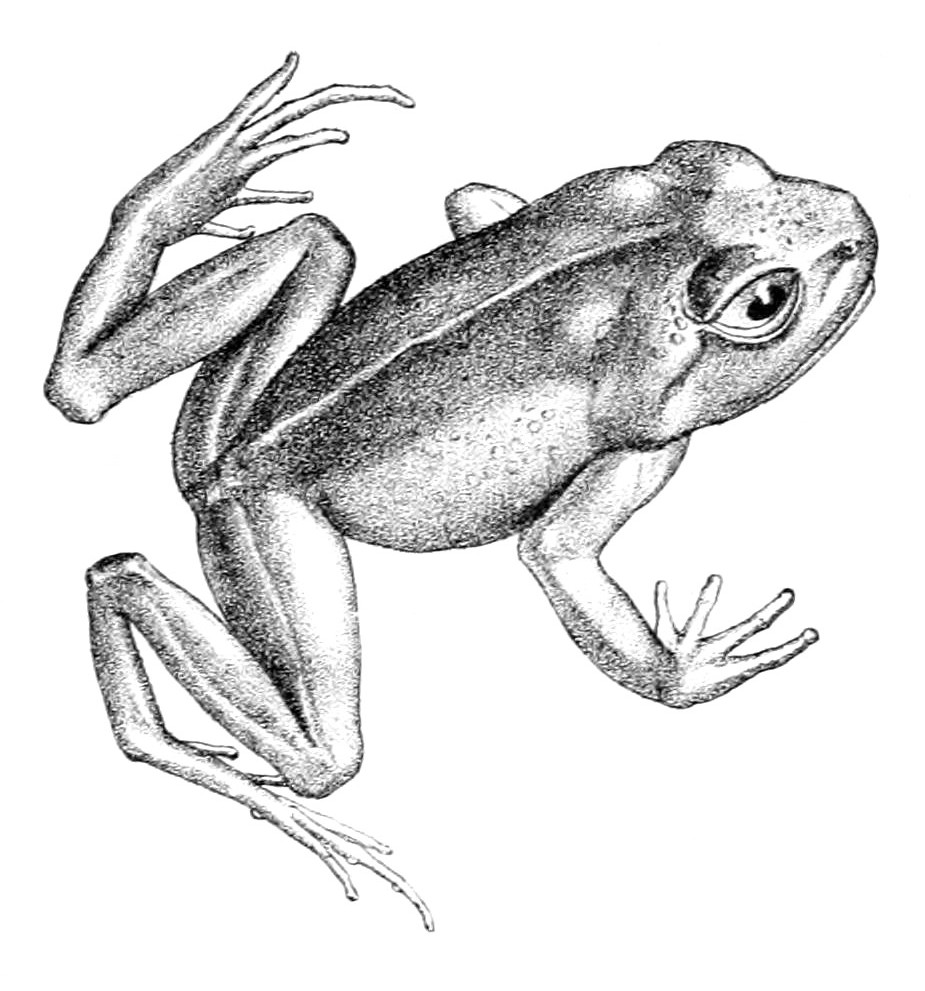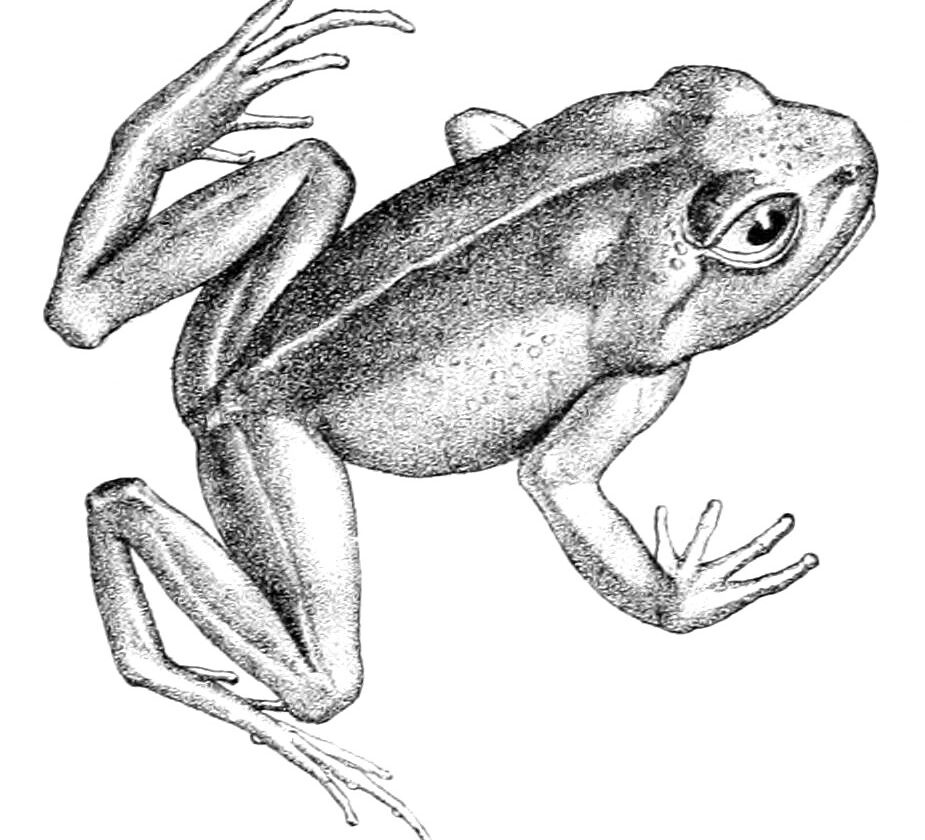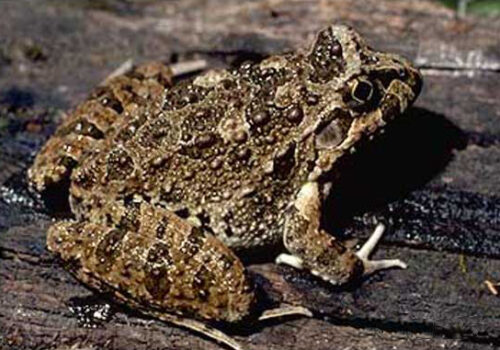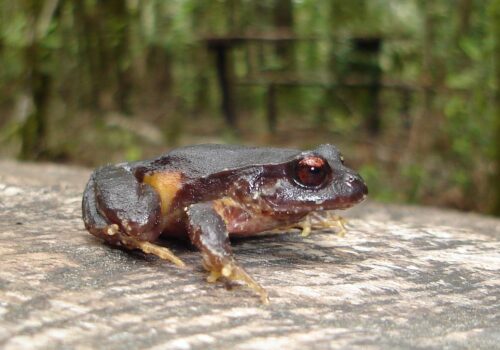- Introduction: Mountain Mist and Mysterious Calls
- Taxonomy and Classification: Unraveling the Identity of Alsodes monticola
- Natural Habitat: Dwelling in the Misty Mountains of Chile
- Physical Characteristics: Master of Blending In
- Behavior and Life Cycle: Quiet Persistence in Mountain Streams
- Ecological Role: Small Yet Significant
- Threats and Conservation Status: Facing an Uncertain Future
- Cultural and Scientific Significance: Beyond Biology
- Conclusion: Safeguarding a Remarkable Mountain Survivor
Introduction: Mountain Mist and Mysterious Calls#
High among the mist-covered slopes of Chilean mountains thrives a modest yet fascinating amphibian—Alsodes monticola. Often hidden beneath moss-carpeted rocks or nestled amid damp leaf litter, this intriguing frog species quietly goes about its life, largely unnoticed by even dedicated nature enthusiasts. Yet, beneath its humble demeanor lies an extraordinary survivalist, adapted uniquely to the harsh climates of mountainous regions.
Commonly known as the Chilean mountain frog, Alsodes monticola offers more than meets the eye. Delightfully elusive, this creature boasts adaptations finely tuned to its environment—living proof of nature’s remarkable ingenuity. For conservationists, ecologists, and wildlife enthusiasts alike, understanding and protecting this species provides valuable insights that extend far beyond the life of a single amphibian.
Taxonomy and Classification: Unraveling the Identity of Alsodes monticola#
Alsodes monticola belongs to the family Alsodidae, an intriguing grouping of frogs predominantly native to South America. Within this family, the genus Alsodes encompasses frogs that are often terrestrial or semi-aquatic, strongly associated with riparian habitats in mountainous terrain.
First described in detail by famed zoologist Bell in 1843, Alsodes monticola has since become emblematic of the distinctive ecosystems found in the Andean foothills and coastal mountain ranges of Chile. The species shares its genus with several similarly adapted relatives, such as Alsodes nodosus and Alsodes vanzolinii, but each species exhibits unique traits honed by evolutionary pressures in differing habitats.
Natural Habitat: Dwelling in the Misty Mountains of Chile#
The Chilean mountain frog is endemic to central Chile, primarily inhabiting altitude ranges between approximately 200 and 1,600 meters. Here, tangled forests of Nothofagus and dense understories create shaded environments perpetually moist from mountain streams and the ubiquitous coastal fogs characteristic of this region.
Within this lush and temperate environment, Alsodes monticola finds an ideal habitat beneath the damp canopy of leaf litter, moss, and fallen logs near cool, clear streams or temporary mountain pools. These areas provide not only the required humidity for the species’ survival but also abundant prey and suitable breeding grounds. It is in these secluded spots—where the humid air fills with the symphony of trickling water and subtle amphibian calls—that Alsodes monticola quietly makes its home.
Relationships within the Ecosystem#
The Chilean mountain frog maintains a delicate coexistence with numerous endemic plant and animal species, relying heavily on the stability and health of its habitat. By contributing to pest control through insect predation and serving as prey to snakes, birds, and small mammals, this quietly compelling amphibian participates actively in maintaining ecological balance within its range.
Physical Characteristics: Master of Blending In#
Alsodes monticola is a remarkably discreet frog with colors perfectly suited to its setting. Adults typically range between 4 and 5 centimeters from snout to vent—small enough to evade most predators’ notice yet substantial enough to actively maneuver through its environment.
Its coloration varies from muted browns to olive-greens, mirroring the earthy undertones of damp moss and fallen leaves. Subtle blotches or speckles often adorn their skin, providing additional camouflage. This impeccable blending allows them to remain hidden, even upon close inspection, and greatly enhances their ability to evade predators.
An integral adaptation aiding this species’ survival is the robust musculature of its limbs, optimized for swift leaps over uneven terrain and slippery surfaces. Their powerful hind legs, coupled with sticky pads on their toes, grant remarkable grip, enabling them to cling effortlessly to damp rocks and vegetation.
Behavior and Life Cycle: Quiet Persistence in Mountain Streams#
The behaviors of Alsodes monticola provide a window into the daily struggles and triumphs of life in a dynamic and often challenging environment. Predominantly nocturnal, these frogs remain hidden during the day beneath rocks and logs. When dusk descends and mountain streams flow serenely beneath the starlit Chilean sky, they venture forth in search of food. Primarily insectivorous, they feast on small arthropods such as ants, beetles, spiders, and flies, capturing prey through accurate leaps and sharp eyesight.
Breeding Cycles and Parental Care#
As winter relinquishes its grip and rains renew shallow pools and streams, the breeding season of the mountain frog commences. Males navigate to pools and streams, utilizing soft, rhythmic calls to attract potential mates—a gentle chorus that imbues cool mountain nights with a hint of romance.
Females deposit eggs in small clusters directly in the water, attached safely beneath submerged vegetation or rocks. Unlike many amphibians, Alsodes tadpoles go through a remarkably prolonged metamorphosis. Often spending one to two years as larvae, these tadpoles grow slowly, taking their time to mature in the cool temperatures before transforming into fully terrestrial adults.
This extended larval period embodies an ingenious evolutionary adaptation—enabling the species to endure the unpredictable, often harsh climates of mountain habitats where rapid developmental cycles may be untenable. Consequently, seen through an ecological lens, slow and steady is indeed a successful strategy for these patient amphibians.
Ecological Role: Small Yet Significant#
Despite their humble stature, mountain frogs play indispensable roles as both predator and prey within their ecosystems. Amphibians like Alsodes monticola serve crucial functions as bioindicators; their permeable skin renders them especially sensitive to environmental disruptions. Their presence—or absence—can thus signify ecosystem health, enabling scientists and conservationists to monitor habitat conditions and detect early signs of ecosystem distress.
Furthermore, they occupy intermediate positions in food webs, assisting in maintaining a balanced prey-predator dynamic essential for biodiversity conservation. Their disappearance could lead to cascading effects, underscoring the importance of conserving this easily overlooked species.
Threats and Conservation Status: Facing an Uncertain Future#
Despite its resilience, Alsodes monticola faces significant and escalating threats, including habitat loss, pollution, and climate change. Human-driven disruption of forests for agriculture, timber extraction, and infrastructure development has fragmented populations and reduced habitats to smaller, vulnerable pockets.
Furthermore, changes in atmospheric conditions triggered by climate change affect fog frequency and rainfall patterns critical for their life cycle and survival. Although precise numbers are challenging to ascertain, the International Union for the Conservation of Nature (IUCN) currently categorizes Alsodes monticola as “Vulnerable,” emphasizing that protective measures must be prioritized.
Conservation Efforts Underway#
Thankfully, efforts to preserve this charming yet threatened amphibian are emerging. Conservation biologists and environmental organizations across Chile focus on habitat restoration, ecological research, and community education to create environmental stewards capable of safeguarding their local biodiversity. Small reserves, ecological corridors, and dedicated conservation awareness programs help nurture resilience for Alsodes monticola and similar species into the future.
Cultural and Scientific Significance: Beyond Biology#
In Chilean tradition, frogs generally symbolize renewal, fertility, and connection to the natural world. While Alsodes monticola may not occupy stories and legends as prominently as other species, its quiet perseverance in battling harsh environmental factors elevates it as a symbol of resilience and adaptability.
From a scientific perspective, studying the unique adaptations and long developmental phases of this frog yields insights into coping strategies organisms have developed to confront climate uncertainties and environmental stresses. This research has broader applications, deepening our understanding of biological resilience in changing ecosystems worldwide.
Conclusion: Safeguarding a Remarkable Mountain Survivor#
The quiet life and remarkable adaptations of Alsodes monticola inspire a newfound appreciation for nature’s ingenuity. Ensuring this humble species thrives in coming generations is not simply about a single amphibian—it represents a vital commitment to preserving delicate ecosystems once overlooked.
You, too, can contribute to the conservation narrative of the mountain frog. Support local conservation efforts, advocate for sustainable development, and become ambassadors for species like Alsodes monticola. Together, we can ensure the calls of these mountain-dwelling amphibians continue serenading the misty nights for years to come.










